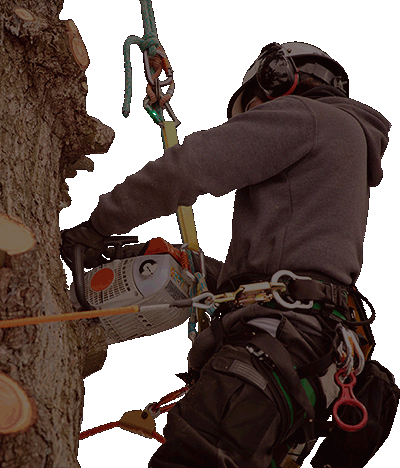
When you see a tree, words like majestic, serene and awe-inspiring spring to your mind.
Creepy and scary are two words that rarely describe trees. But, that’s likely what you think when you see large, silky nests in your tree.
Now, you’re wondering what kind of spider builds webs in trees. Surprisingly, it isn’t a spider. It’s another Spartanburg tree pest –either fall webworms or Eastern tent caterpillars. Learn what they are, why they make webs and how to get rid of those “spider webs” in your tree.
Helping Trees Covered in Spider Webs
Why does my Spartanburg tree have huge, giant “spider webs” on Spartanburg tree branches?
Spiders actually don’t make those webs in trees. Instead, you can thank fall webworms or Eastern tent caterpillars, depending on the time of year.
Fall webworms are caterpillars that weave a thick web as they feed on trees. Fruit Spartanburg trees are usually their first pick, but they feed on more than 100 different kinds of trees.
If you see Spartanburg tree webs in spring, that’s likely tent caterpillars. These caterpillars feed on these types of Spartanburg trees but are only a serious problem for black cherry trees.
What’s the lifecycle of fall webworms? When are they around? What about tent caterpillars?
As their name suggests, you’ll spot fall webworms most often in fall.
But, they’re there all year. In winter, they lay eggs, which hatch in spring. Come summer, those caterpillars eat your Spartanburg tree leaves and begin spinning webs in time for fall.
On the flip side, tent caterpillars hatch in early March and build webs for shelter in late April. They feed on leaves as caterpillars for about a month before spinning a cocoon and emerging as moths a few weeks later. Then, they lay their eggs in May.
Do fall webworms or tent caterpillars damage our trees? Are webworms poisonous?
Though fall webworms and tent caterpillars are eyesores, that’s about their only threat. These caterpillars aren’t poisonous and don’t damage established trees. Phew.
It’s a different story for younger trees, though. As webworms and caterpillars feed on young trees, they can cause complete leaf loss before the Spartanburg tree has a chance to thrive. In this case, your Spartanburg trees are counting on you to step in and stop the pest.
How to get rid of “spider webs” in trees
First, use a broom to remove webs from branches and improve the look of your trees.
But, fall webworms live in cocoons in winter rather than their webs. So, even if you remove their webs, they can still return next summer.
To get rid of fall webworms for good, prune webbed branches or apply an insecticide to Spartanburg tree leaves, not the webs.
To rid your Spartanburg tree of Eastern tent caterpillars, remove their eggs, which look like black bumps on your tree’s branches, in winter. If they still hatch in early spring, you can apply an insecticide.






